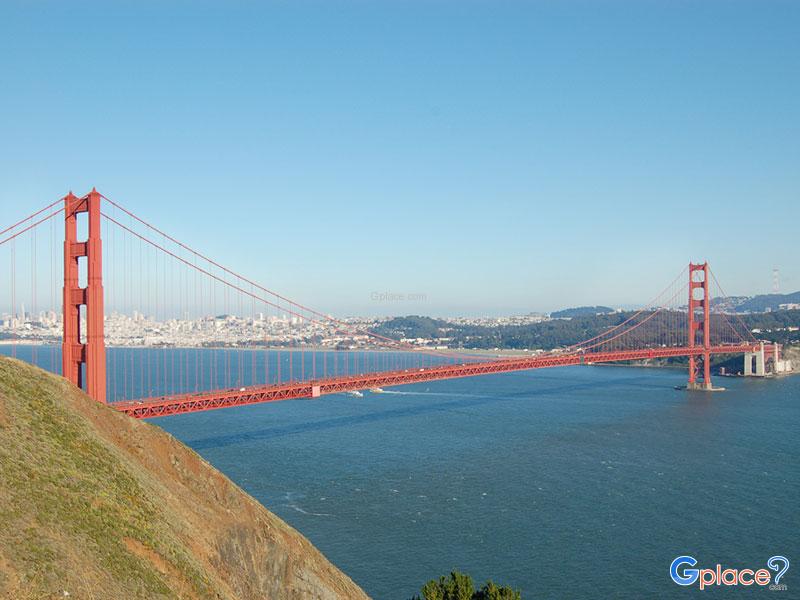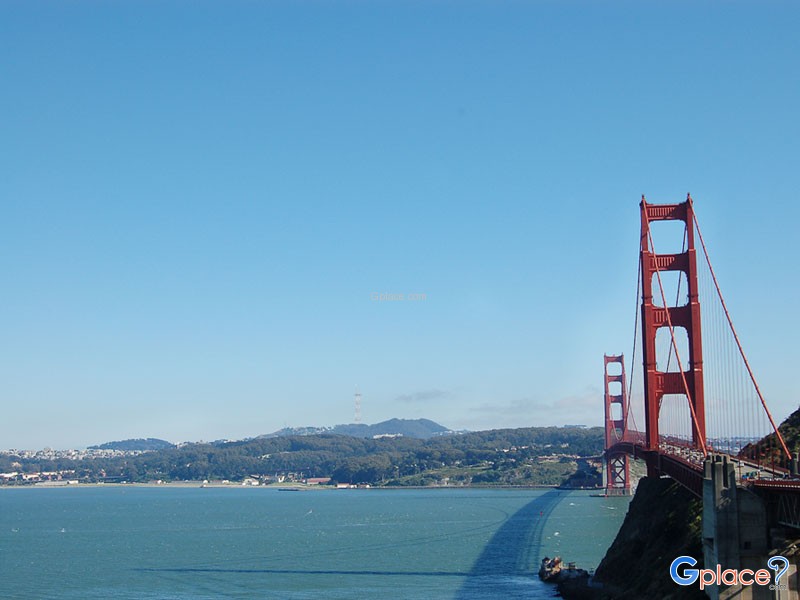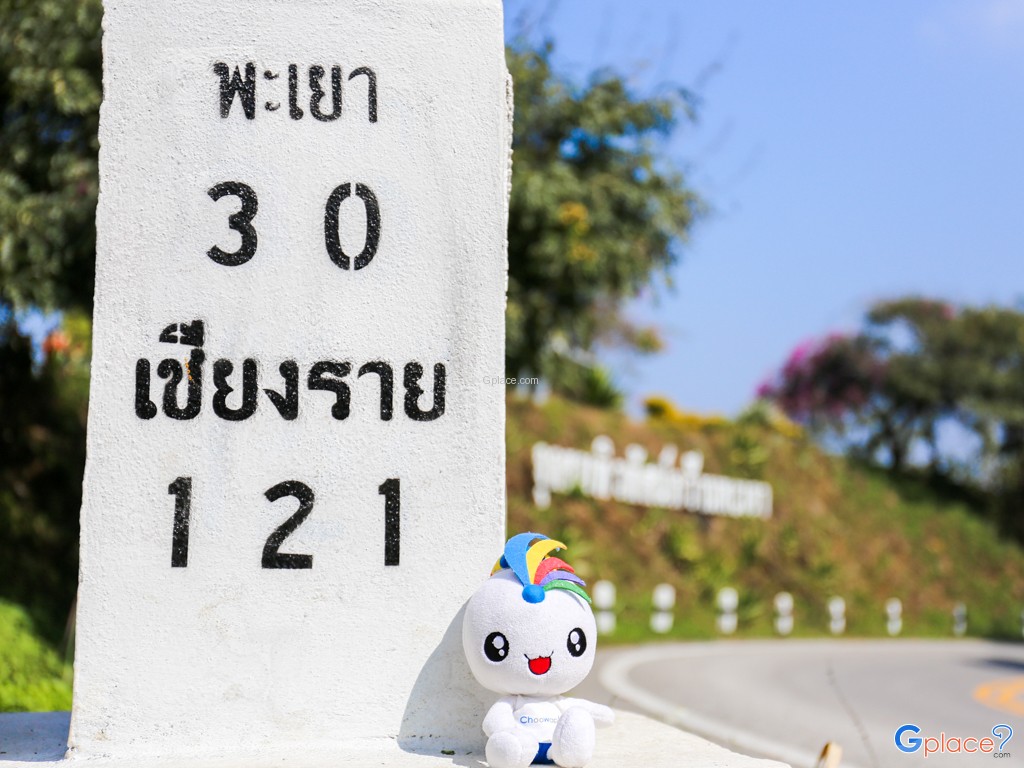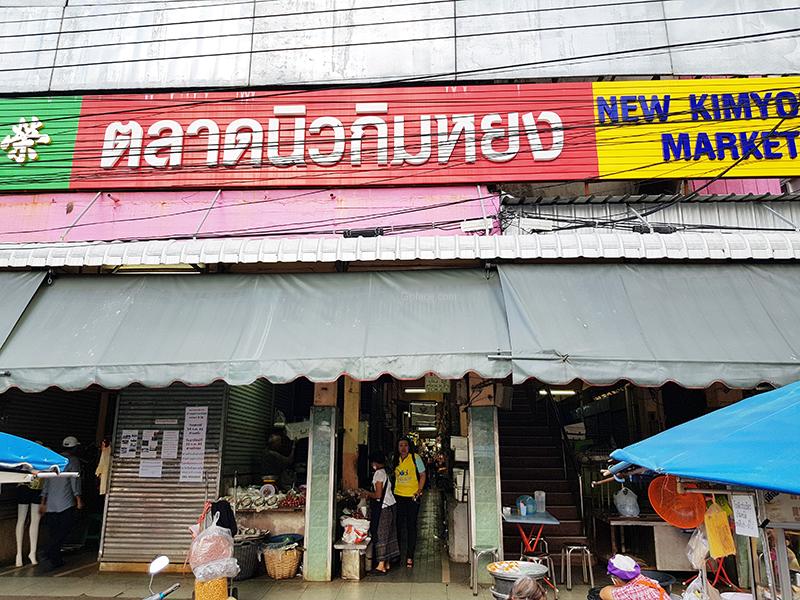“One of the Top Landmark of the world and USA”
The Golden Gate Bridge had the longest suspension bridge main span in the world, at 4,200 feet (1,280.2m). Since 1964 its main span length has been surpassed by ten bridges; it now has the second longest main span in the United States, after the Verrazano-Narrows Bridge in New York City.
Total length of the Golden Gate Bridge from abutment to abutment is 8,981 feet (2,737 m).
At 746 feet (227m) above water the Golden Gate Bridge had the world's tallest suspension towers until 1998 when bridges in Denmark and Japan were completed.
Structure
The weight of the roadway is hung from two cables that pass through the two main towers and are fixed in concrete at each end. Each cable is made of 27,572 strands of wire. There are 80,000 miles (129,000 km) of wire in the main cables. The bridge has approximately 1,200,000 total rivets.
Traffic
As the only road to exit San Francisco to the north, the bridge is part of both U.S. Route 101 and California Route 1. The median markers between the lanes are moved to conform to traffic patterns. On weekday mornings, traffic flows mostly southbound into the city, so four of the six lanes run southbound. Conversely, on weekday afternoons, four lanes run northbound. During off-peak periods and weekends, traffic is split with three lanes in each direction, or three and two lanes with one buffer lane.
Traffic is separated by small, plastic pylons, and from 1971 through 2007, there were 16 fatalities from head-on collisions. To improve safety, the speed limit on the Golden Gate Bridge was reduced from 55 mph (89 km/h) to 45 mph (72 km/h) on October 1, 1983.[38] Although there has been discussion concerning the installation of a movable barrier since the 1980s, only in March 2005 did the Bridge Board of Directors commit to finding funding to complete the $2 million study required prior to the installation of a movable median barrier. As of 2012, the study is still ongoing.
Visiting the bridge
The bridge is popular with pedestrians and bicyclists, and was built with walkways on either side of the six vehicle traffic lanes. Initially, they were separated from the traffic lanes by only a metal curb, but railings between the walkways and the traffic lanes were added in 2003, primarily as a measure to prevent bicyclists from falling into the roadway.
The main walkway is on the eastern side, and is open for use by both pedestrians and bicycles in the morning to mid-afternoon during weekdays (5 am to 3:30 pm), and to pedestrians only for the remaining daylight hours (until 6 pm, or 9 pm during DST). The eastern walkway is reserved for pedestrians on weekends (5 am to 6 pm, or 9 pm during DST), and is open exclusively to bicyclists in the evening and overnight, when it is closed to pedestrians. The western walkway is only open, and exclusively for bicyclists, during the hours when they are not allowed on the eastern walkway.
Bus service across the bridge is provided by two public transportation agencies: San Francisco Muni and Golden Gate Transit. Muni offers Sunday service on the 76 Marin Headlands bus line, and Golden Gate Transit runs numerous bus lines throughout the week. The southern end of the bridge, near the toll plaza and parking lot, is also accessible daily from 5:30 a.m. to midnight by Muni line 28.
information by wikipedia










